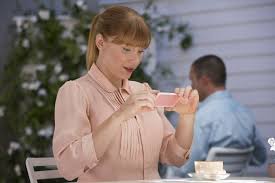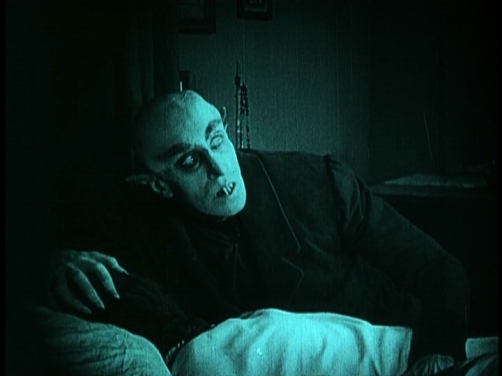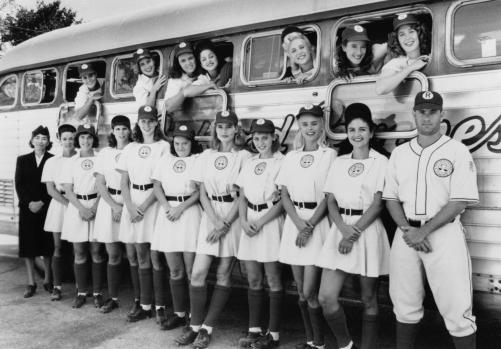In recent years it seems we move further and further into an online world and leave old methods of connecting to both the people and the world around us behind. We are bombarded with media and, for better or worse, it has an effect not only on how we see the world around us but how we view each other and ourselves. A concern has grown to appear a particular way online, that we are on some level aware of the unreality of, but remains endlessly revved by the pressure to match the glamour of others profiles. The double standard we hold ourselves to here is commented on by most of the movies that deal with the downfalls of social media, and most recently and successfully by Matt Spicer in Ingrid Goes West (2017), which follows Ingrid on her quest to impress an Instagram Celebrity, played by Elizabeth Olsen, to her eventual emotional turmoil at discovering that her life is not as perfect as her filtered online persona would suggest. The self-defeat that Ingrid suffers despite learning she is not the only one who edits her troubled life to gain an internet following, reflects a common theme through much of the media that tries to represent the unknowable oncoming advancements of technology in our day to day lives and inescapable self-destruction. While Ingrid goes West could be read as judjement on Ingrid’s indulgent fascination with the lives of others and a selfish obsession with making her own lives more desirable, other media looking at the advances in how technology has advanced the movement on information comes to the same conclusion without the ironic, hypocritical ending of Ingrid. While Ingrid Goes West is the most overt, straightforward, and real-life applicable iteration of these cautionary tales, looking forward to more advanced technology, Charlie Brooker’s Black Mirror and Satoshi Kon’s Paranoia Agent delve deeper into this association with inescapable media and technology and self-destruction.
Black Mirror explores the potentially threatening and often disturbing futures of humanity as we become more and more dependent and enamoured with technology and technological advancement. The majority of episodes follow either a single person, or a small group while the episode works to establish the world and the particular tech that will inevitably shape, and often change, their lives. The focus this show places on the individual is a strength to both its form and its message is undeniable; each episode clocks in around the hour mark, having the viewer follow fewer people allows for the establishment of our central character while also building the specifics of the world of the particular episode. On a thematic level, the singularity of the view adds a realism, mimicking our relationship with the internet or a smartphone, which is one that features only one person, and something that we treat with a great deal of privacy. The time we spend looking at a screen is often removed from a face to face interpersonal social experience, and arguably the replacement of it. Allowing the characters to be mostly alone with the tech leads to experiences mimics this reality while also adding to the tension in the characters’ isolation. The bleak pessimism of some of the episodes has become iconic and serve as some of the most memorable, fan favourite episodes; the intersecting ruined lives of the men in “White Christmas”, the devastation caused by too much information in “The Entire History of You” or the numerous episodes of abuse of featured in “Black Museum”. But even in the rare, almost hopeful endings, most clear in the three unconventional love stories; “San Junipero”, “Hang the DJ” and “Be Right Back”, a common thread through all the disparate stories emerges. Some element of responsibility and relative fairness is key to most all episodes, in other words, Black Mirror doesn’t allow its characters victimhood, they are always to some degree to blame for their predicament.


Taking the central character of the season 3 premiere of Black Mirror “Nosedive”, the structure of the episode established her as ambitious verging on dreamy in her hopes of moving up the social scale and by way of doing so, into a more affluent life emulated by her dream house. The first year of a more Americanised Black Mirror, and the first episode to boast a big-name director in Joe Wright, still displays the typical core features of classic Black Mirror episodes; beginning by endearing us to the main character, before watching them lose control and ending up far worse off than they began. This episode bears a striking resemblance to Spicer’s Ingrid goes West, but deviates essentially in how it frames our main character as a victim. Lacie (Bryce Dallas Howard) in “Nosedive” falls on hard times through the episode in different ways, all resulting from her own actions, losing social points after being rude or being punished for lying. While Ingrid acts similarly reprehensible, lying and using people to serve herself. However, the final sentiment of Nosedive has Lacie screaming abuse at her cellmate, acting as a final release at the loss of any hope of climbing to the top of the social ladder, yet does not attempt to redeem her in any way and ends with an image if her fighting. Ingrid however, ends her downspin with a display of defeat and self-harm to all her online followers. The film doesn’t redeem her bad behaviour through the film, but her final action to regain her follower’s favour, and her success in this then frames her as a victim of social media and the modern vices. This works to effectively show how the image we see on social media is incomplete and doesn’t show the full truth if the situation. In an unexpectedly moral leaning to a famously amoral show, Black Mirror doesn’t let individuals get away with their crimes, and the film calls their punishment into question, often not revealing the truth of their sins until the end as in “White Bear” and “Shut Up and Dance”, presenting us with their punishment before we know their crime.


The presentation of the media and technology as adamaging force that serves as a vice for all people from a protective mother as in “Arkangel” or an opinionated comedian as in “The Waldo Moment”, builds a world in the loosely connected episodes of Black Mirror that presents a clear and meditative judgement of technology as dangerous . The use of the character Waldo mimics in some ways the use of Maromi, the cutesy pink character that features throughout Satoshi Kon’s anime series Paranoia Agent. Maromi is the beloved Hello Kitty-esque character designed by the introductory character Tsukiko Sagi who then becomes the first victim of the chaotic assaulter “Lil’ Slugger” with his golden rollerblades and bent baseball bat. Tsukiko’s life is the focus if much of the first episode of the series and shows her isolated life as an animator, and provides a similar individualised view of the world that Black Mirror‘s episodic structure creates, while the shifting character focus maintains this through the remaining episodes of Paranoia Agent. However, both Maromi and Lil’ Slugger recur in the series as symbols for attractive and harmful aspects of media attention respectively. Maromi’s role grows physically as the media attention of Lil’ Slugger grows more prominent in everyone’s lives, and spreads beyond just the lives of his victims through the media panic that is built around him. We learn that this is because they are both creations of Tsukiko and their characters balloon out of her control and no longer belong to her solely having been adopted by the masses. Her invention of Lil Slugger as a way to remove her responsibility byway if rendering herself incapable of work and thus free of the pressure to create a new character as loved as Maromi ties the attraction of media and a self-destruction together irrevocably. The widespread hysteria surrounding the attacks affect unrelated characters and their paranoia mixed with some desire to be attacked to relieve themselves of some souse of pressure in their lives leads them to psychosomatically suffer the injuries of an attack. While the series initially frames Lil’ Slugger as some chaotic villain, ultimately, he is a blending of the comforts and dangers of the inescapable pressures of both consuming and creating media and leaves the characters as both victem and victimiser.


How each of these three texts frames victimhood around social media and technology is so varied, but ultimately how they frame the characters as self-destructive and allows them a responsibility for their own suffering. This all relates back to the idea of the singularity of focus each of these takes when dealing with the character leading to the feeling of the character and the media or tech being the only two constants, leaving the ultimate conflict to be individualised and justified by the framing. Though possibly due to the believability of the situation and our shared experience of feeling less individual and singular because of technology and social media.









